Miracles for Sale

Brief Synopsis
Cast & Crew
Tod Browning
Robert Young
Florence Rice
Frank Craven
Henry Hull
Lee Bowman
Film Details
Technical Specs

Synopsis
Michael Morgan, a manufacturer of magician's tricks, meets Judy Barclay when she runs into his shop to escape a man who is following her. Judy asks Mike's help in debunking the psychic Madame Rapport, but before divulging any further information, she is silenced by a threatening glare from Dr. Sabbatt, an expert on demonology who is browsing in Mike's shop. His interest piqued, Mike follows Judy to Sabbatt's apartment and watches as she runs terrified from the building. Returning to the apartment later that night, Mike finds the door chained from the inside and Sabbatt murdered, his corpse circumscribed by a devil's circle. Puzzled, Mike sends for Inspector Gavigan of the police department, who questions Madame Rapport, Mrs. La Claire, Tauro and Dave Duvallo, all psychics and magicians who had visited Sabbatt around the time of his murder. Tauro, who had been blackmailing Sabbatt, is the Inspector's prime suspect until Mike finds his corpse and the coroner announces that Tauro was murdered before Sabbatt. The mystery deepens when Mike next finds mysterious messages claiming that Madame Rapport is Sabbatt's wife and Judy's sister. When Mike questions Judy, she admits the relationship and explains that Sabbatt was rigging tricks so that Madame Rapport would win the $25,000 psychic society award. In an attempt to trap the killer, Mike assembles the suspects for a seance in which a projected image of Sabbatt states that Judy has a clue to the identity of the murderer. Using Judy as bait, Mike tricks the killer into trying to murder her during a sharp shooting demonstration, and when the disguised figure flees from the fake shooting, Mike catches him and unmasks Duvallo.

Director

Tod Browning
Cast

Robert Young
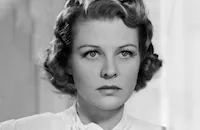
Florence Rice

Frank Craven

Henry Hull
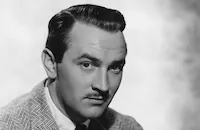
Lee Bowman
Cliff Clark
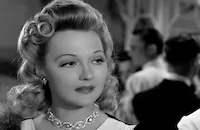
Astrid Allwyn

Walter Kingsford
Frederic Worlock

Gloria Holden

William Demarest
Harold Minjir

Charles Lane

Richard Loo
John Picorri
Suzanne Kaaren

Armand Kaliz
Harry Tyler
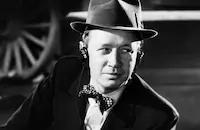
Eddie Acuff
Frank Sully
Chester Clute
Truman Bradley

Phillip Terry
Alphonse Martell

E. Alyn Warren
Monte Vandergrift
James C. Morton
Edward Kilroy
Paul Sutton
John Davidson
Harry Vejar
Frances Mcinerney
Manuel Paris
William Norton Bailey
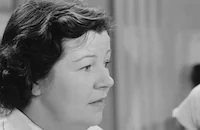
Margaret Bert
Cyril Ring

Claire Mcdowell
Edward Earle
Crew
Jerry Bresler
Harold S. Bucquet
J. J. Cohn
Jack Dawn
Charles Dorian
Cedric Gibbons
James E. Grant
Charles Lawton
Marion Parsonnet
Harry Ruskin
Gabriel Scognamillo
Harry Sharrock
Douglas Shearer
Frederick Y. Smith
Dolly Tree
Edwin B. Willis

Film Details
Technical Specs

Articles
Miracles for Sale -
Miracles for Sale was based on Clayton Rawson's first novel, the 1938 mystery Death from a Top Hat. Harry Ruskin, Marion Parsonnet - who would later work on Gilda (1946) - and James Edward Grant wrote the screenplay, which took definite liberties with the novel, like changing Rawson's character, "The Great Merlini" to Mike Morgan, "The Amazing Morgan." Played by Robert Young, Morgan is a young magician who owns a magic shop. Like Harry Houdini before him, he is fond of unmasking fake spiritualists who prey on the vulnerable, often working in conjunction with the police. During one such séance, Morgan meets Judy (Florence Rice) who wants Morgan to help her find a killer before she becomes the next victim.
The film, which went into production at the MGM lot for a very brief thirty day shoot from May 22nd to June 22nd, 1939, also co-starred Henry Hull who, according to The Youngstown Vindicator, played three separate roles in Miracles for Sale thanks to the skill of MGM makeup whiz Jack Dawn, who "changed Hull's appearance in every respect, even to the shape of his skull, his face and ears, for each character." Hull was also the first actor to have his eye color altered for a film by the use of contact lenses, which changed his natural brown to blue.
Eye color wasn't the only hurdle for Hull, The Pittsburgh Press reported that he had trouble with one of those roles, that of a magician performing a card trick. Hull was to shuffle the cards, take one out and claim it was the Jack of Diamonds, but he kept pulling out the wrong card. Actor Chester Morris, who was filming Thunder Afloat (1939) on a nearby set, had once been a magician, so he sat in to see Hull do the trick. After watching Hull struggle through several takes, he told him, "Cheer up, Henry. It's happened to me, only it was before an actual audience."
Appearing in the film was also up-and-coming leading man Lee Bowman, Astrid Allwyn, Gloria Holden and character actor William Demarest. Although the Los Angeles Times announced that Virginia Grey would appear in the film, she is not listed in the credits.
Released on August 10, 1939, Miracles for Sale, which had been budgeted at $297,000, ended up losing $39,000 at the box office. The film did receive decent reviews from publications like Variety who wrote "This whodunit has some background color that tickles the imagination [and] leaves a pleasant impression." The New York Times' Frank Nugent felt that although the film had "enough loose ends to fringe a Spanish shawl, the tale has been rather ingeniously contrived and jogs along briskly under Tod Browning's direction [...] The identity of the murderer is fairly obvious from the start, but the motive and the methods are not-not even, we are bound to add, after crime-solver Robert Young has explained it all. But that's the way with these things. So long as they're fun to watch it doesn't matter that they're not models of plot carpentry."
Miracles for Sale was the sixth and final outing for the romantic team of Robert Young and Florence Rice. It was also Tod Browning's final film. After the failure of Miracles for Sale, he was fired by Metro-Goldwyn-Mayer and spent the next quarter century in wealthy seclusion at his home in Malibu, where he struggled with alcoholism. He died in 1962 from throat cancer - the same illness that had claimed his good friend, Lon Chaney, almost thirty years before. Robert Young continued to be a leading man in films until the 1950s, when he made the switch to television in shows like Father Knows Best and later Marcus Welby., M.D..
By David Kalat
SOURCES: Easker, Alfred Tod Browning's Miracles for Sale (1939) http://366weirdmovies.com/tod-brownings-miracles-for-sale-1939/ The Internet Movie Database "Army-Navy Grid Game to Supply Film Thrill." The Los Angeles Times 8 May 39 Mank, Gregory William Hollywood Cauldron: Thirteen Horror Films from the Genre's Golden Age "Eye Color Can Be Changed." Mid-Cities Daily News 14 Dec 80 Nugent, Frank S. "THE SCREEN; Murder in Magicians' Row Is the Theme of 'Miracles for Sale,' the New Mystery at the Criterion" The New York Times 10 Aug 39 Pitts, Michael R. Famous Movie Detectives III "Real Magician Has Woes Akin to Actor." The Pittsburgh Press 14 Jul 39 http://www.tcm.com/tcmdb/title/687/Miracles-for-Sale/notes.html "Magic Tricks Figure in Film Opening at Paramount Friday." Youngstown Vindicator 29 Aug 39

Miracles for Sale -
Quotes
Trivia
Notes
Although the onscreen credits spell Dr. Sabbatt's name with two "t's", written references within the film itself spell it with one "t." This was the sixth and final film in which Robert Young and Florence Rice co-starred as a romantic "team." This first film together was Sworn Enemy (1936, see below). After the completion of this film, director Tod Browning went into retirement.















